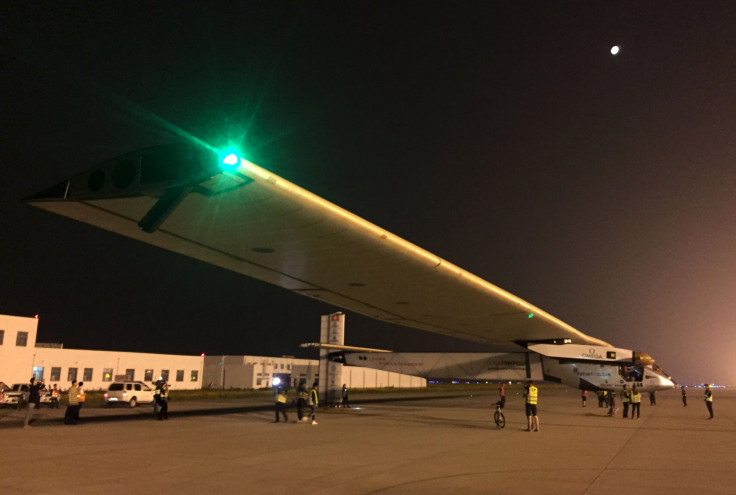Solar Impulse 2 Flight Grounded In Japan By Storms

A record-breaking attempt to fly around the world using only solar power was cut short on Monday when the Solar Impulse 2 aircraft was forced by worsening weather to land in Japan while travelling from China to Hawaii.
The craft began its 5,000-mile flight to Hawaii from Nanjing, China, early Sunday, but storms forced it to land on the island of Nagoya, Japan. The China-Hawaii flight was set to be the seventh leg in Solar Impulse 2’s journey across the world. The plane took off from Abu Dhabi in March, and has since flown only on the power provided by its bank of 17,000 solar cells.
A message on the project’s Twitter feed said: “Weather window toward Hawaii has deteriorated. We decided to make an intermediate landing in Nagoya!”
Swiss pilot Andre Borschberg was 36 hours into a flight that was expected to take six days. The team will now wait for clearer skies before trying to continue from Japan. After crossing the Pacific Ocean via Hawaii, the plane is scheduled to fly across the United States with stops at Phoenix and New York City, and an undecided location in the Midwest.
“"We are not daredevils, we are explorers,” mission control official Bertrand Piccard told the BBC. "We have to put safety at the top of all of our priorities.
"Everyone is very happy with the plane - but the weather does not fit."
In Nanjing, weather conditions had forced the team to delay the trip by weeks. The fresh delay raises fears that the plane will be unable to complete the next leg of its journey -- from New York City to either southern Europe or North Africa -- before the Atlantic hurricane season peaks in August.
“I cross my fingers and I hope to cross the Pacific,” Borschberg had told reporters before leaving Nanjing for Hawaii, according to Agence France-Presse. “We have a good weather window, which means we have a stable corridor to reach Hawaii.”
While airborne, Borschberg will fly at an altitude of 28,000 feet and temperatures of almost 100 degrees in the unpressurized and unheated cockpit of the Solar Impulse 2.
“I don’t see it risky, in the sense that we worked a long time on all these different questions,” he had said earlier. “In the worst case we have a parachute, we have a life raft and we know how to use it. Of course, hoping that we will not need to do that.”
© Copyright IBTimes 2025. All rights reserved.





















